- Early adopter of HEMI® engine power in A/Gas Supercharged racing
- Known for his stunning Candy Apple Red cars with 23-karat gold leaf
- Elevated the professionalism of drag racing through immaculate presentation
Nicknamed “Big John” for his towering 6’4″, 220-lb frame, John Mazmanian was a true original in the Southern California hot rod scene. He got his start in the mid-1940s, tearing across dry lake beds in his ’32 Ford roadster alongside legends like Ed Iskenderian, Stuart Hilborn and Paul Schiefer. After serving in WWII, he returned home and jumped back into speed with a supercharged Ford stocker, then a fuel-injected ’61 Corvette before discovering the powerhouse that would define his legacy: the Chrysler HEMI engine.
As his family’s waste management business thrived, so did his racing program. Big John built a drag racing team that combined style and performance, earning respect from peers and fans alike. Keith Black dubbed the team “The Armenian Army,” and their pit area was legendary – not just for the cars, but for the Armenian shish kabob feasts they’d host, welcoming competitors as friends.

AN EARLY HEMI HERO
It was his 1941 Willys American Coupe where Big John first started running HEMI engine power. Supercharged “gas” classes were fast becoming fan favorites in drag racing, and that was the reason to make the switch from the Corvette to the quicker and faster category. John was friends with Ed Iskenderian and had worked a deal to have an Isky employee drive the car, Bob “Bones” Balogh.
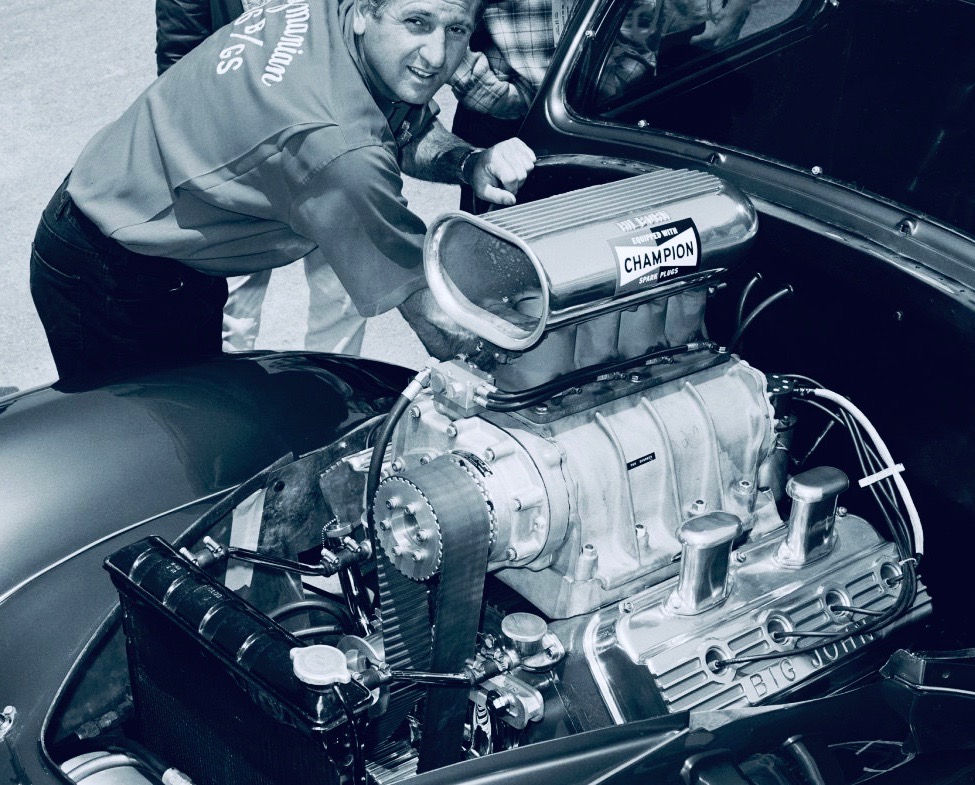
“I went to a wrecking yard and bought a used Chrysler HEMI for $50, and Bones build the engine up at Iskenderian’s. The HEMI was bored and stroked to 467-cid, and dyno-tested at 824 hp,” he told a reporter many years later. The use of a HEMI engine was a radical change from the then-popular Oldsmobiles (as used in the much-publicized rival Stone – Wood – Cook car). The installation of the Chrysler was the ingredient in getting the car into the 9-second range! This took place in 1964 with a 9.77-second blast at 149 mph. Eventually, in 1965, the car set both ends of the NHRA record at 9.71 at 152.28. And not exactly an aerodynamic entry!
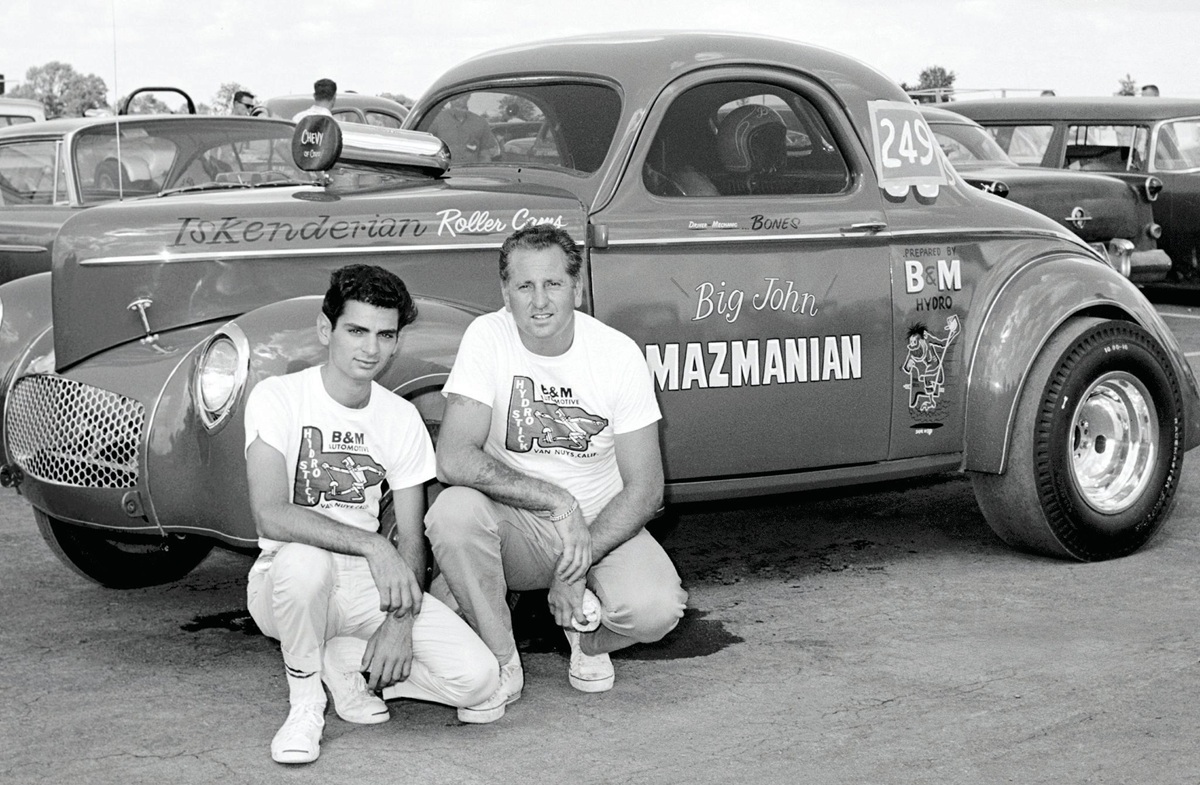
Shown in the earliest version of the Willys (using Corvette power) is nephew Richard Siroonian (who after serving in the military went on to drive the upcoming 1968 Funny Car). John was also friends with Bob and Don Spar of B&M Transmissions, who built the race-prepped automatic transmissions.
HEMI ENGINE-POWERED AUSTIN
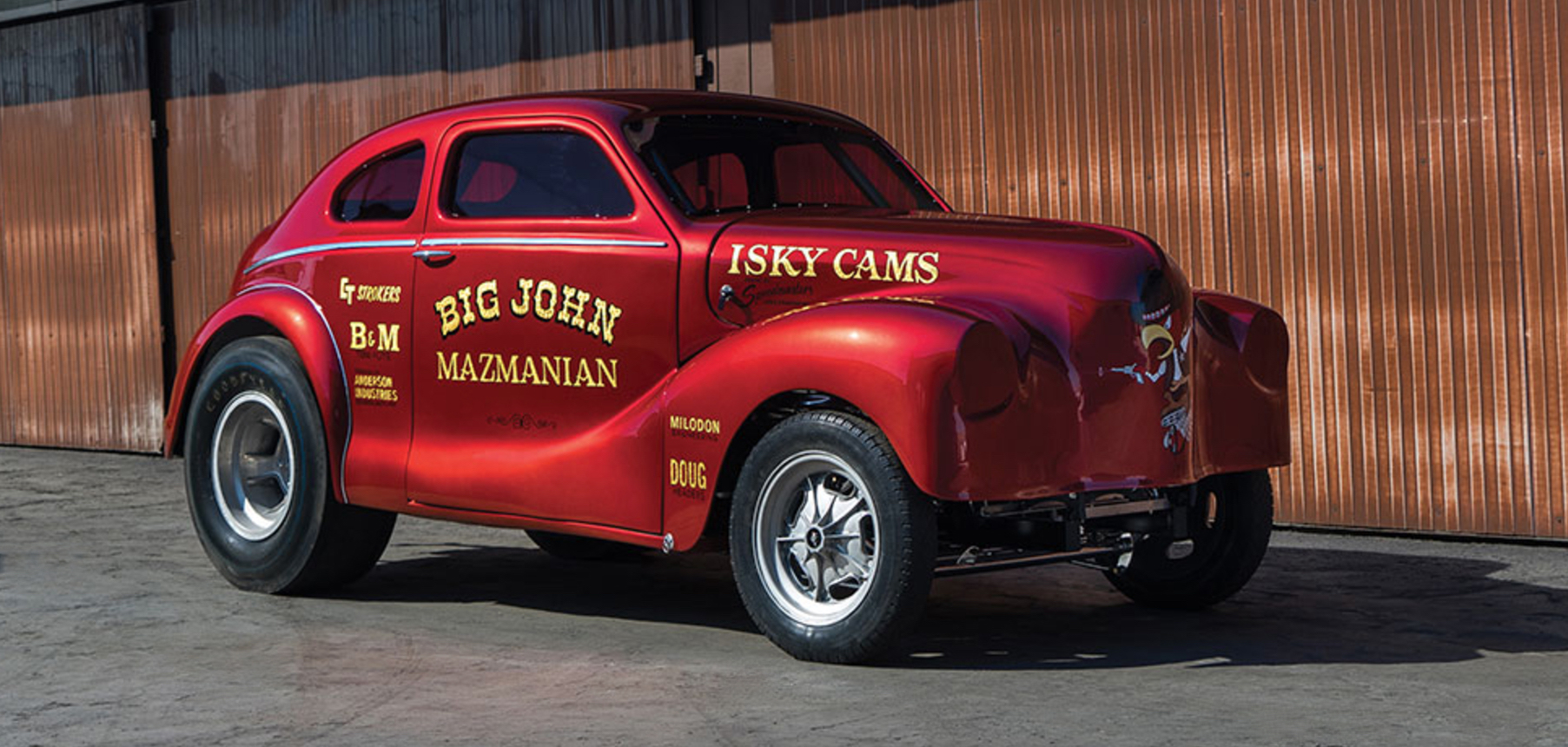
For 1967, the switch went to this 1951 Austin Sedan, slightly more sleek and to cut through the air with less restriction, the car received a 3-inch top chop. Anderson Industries provided the fiberglass one-piece front end, doors and decklid. It ran a Chassis Engineering custom-built frame (with 2 x 3-inch rectangular material) with full roll cage. The trademark Candy Red paint with gold leaf lettering provided the classy appearance, and this car was known as “The Football” because of its overall shape. It ran a 8.92-second run at 158.71 mph on an early shake-down run. All thanks to that big HEMI engine…
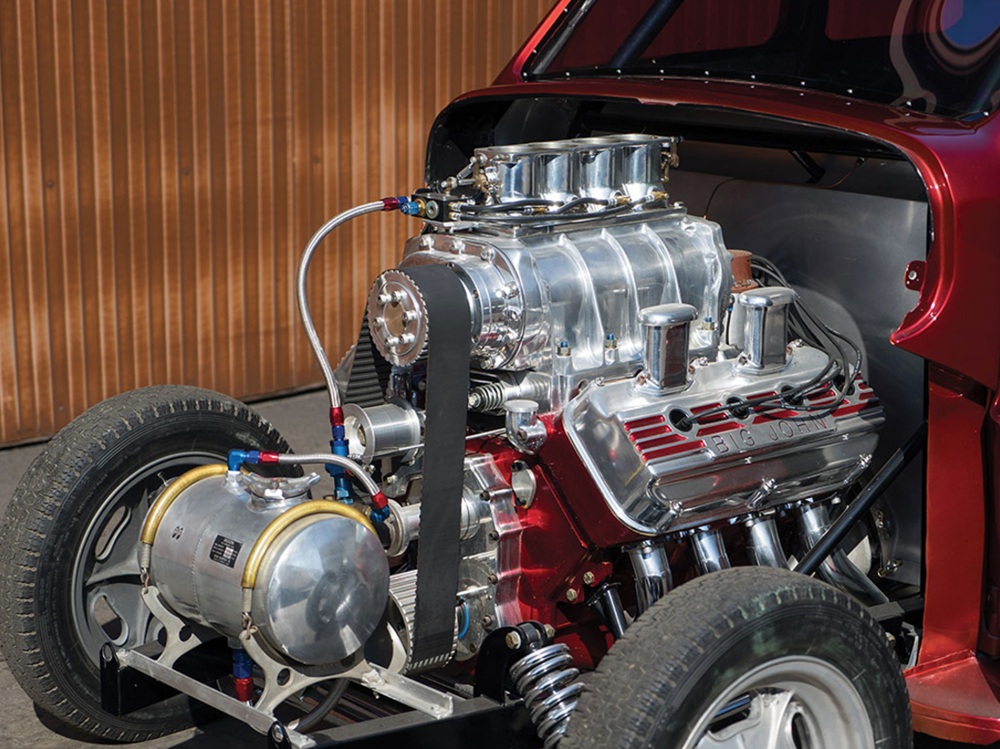
When first built, Dave Zeuschel was the engine builder of the 1957 Chrysler HEMI engine and he used a C-T 3/8-inch stroker crankshaft, bringing the displacement up to 427 cubes. Ansen forged pistons, Isky roller cam, Keith Black gear drive, Milodon lower support, GMC 6-71 Van Luven-prepped supercharger, Hilborn injector, Cragar intake, Doug’s Headers. A B&M modified TorqueFlite® transmission and pushbutton gear selector were part of the driveline along with a Pontiac rearend (M/T magnesium third member) with Henry’s Axles. Old school all the way!
HIS FIRST FUNNY CAR
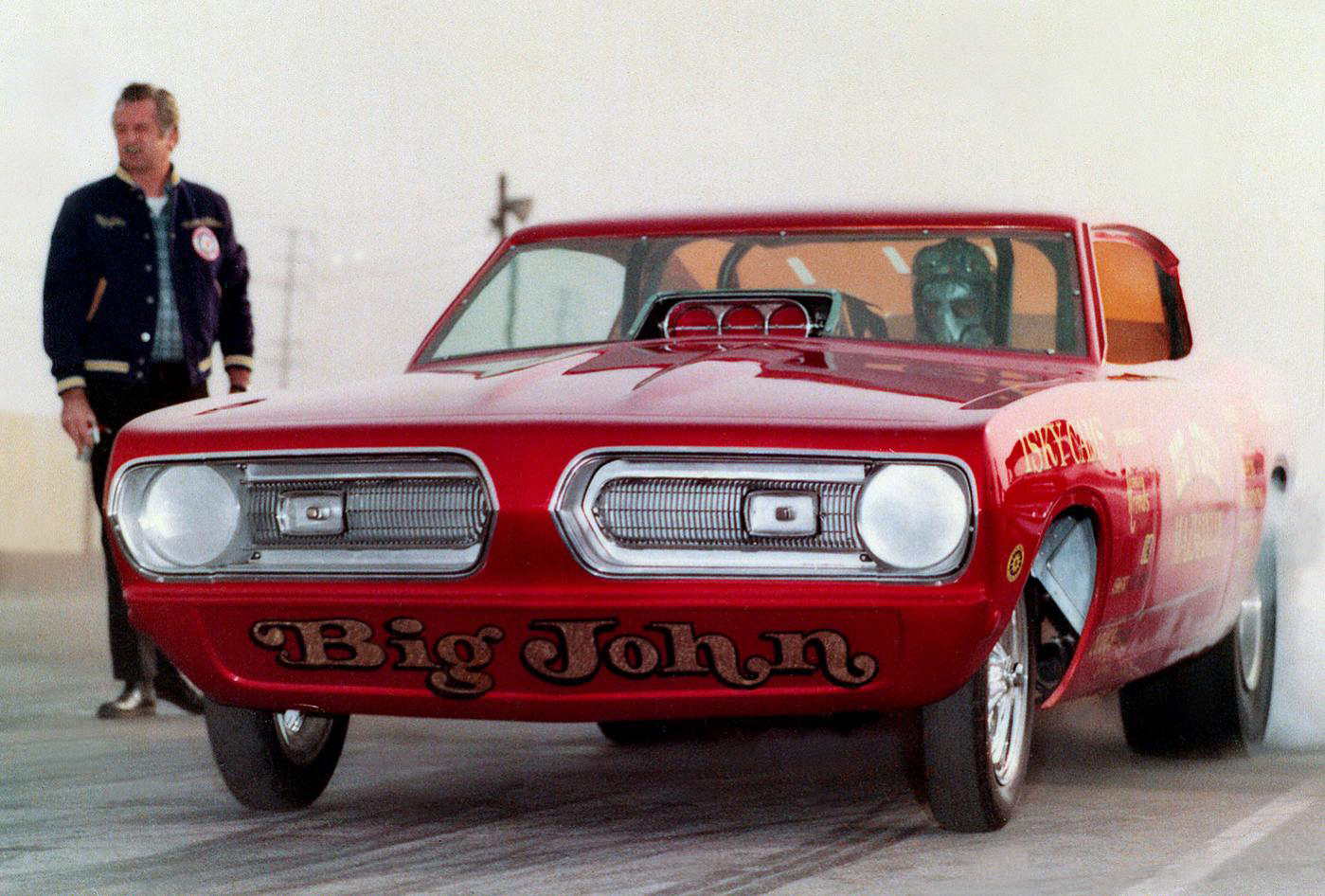
The ’68 Barracuda came in September 1968 as the Funny Car craze had grown to the point where it made sense to switch to nitromethane from the AA/Gas category. Built with a one-piece fiberglass body (slightly chopped top, bumpers removed, stretched to accommodate the longer tube chassis wheelbase) and done in his signature Candy Red paint with 23-karat gold leaf lettering, complete with real Barracuda grilles.
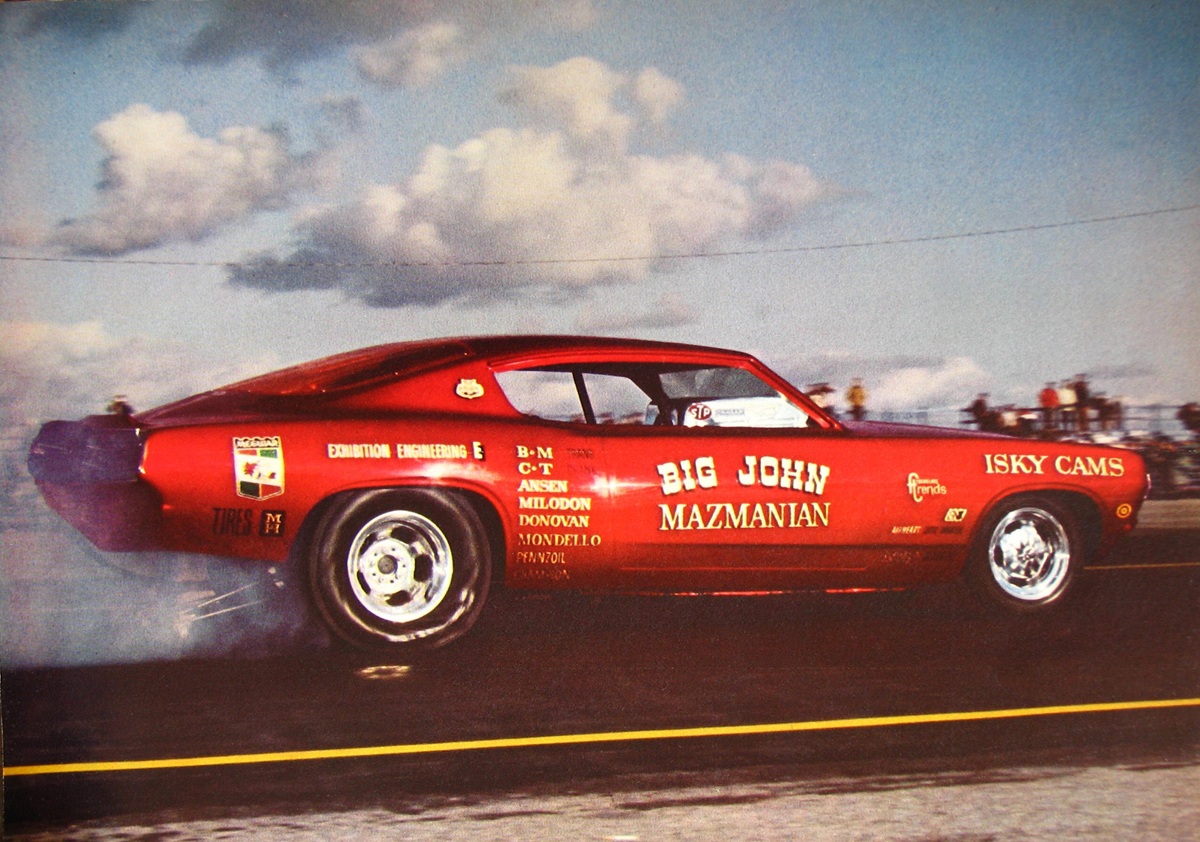
Truly a “class act” in both appearance and performance, here’s how Maz explained the color of his racecars in a 2000 interview: “One of my pit crew members, Rubin Palazuelos, did all my paint and bodywork and was employed in my business. He mixed up a secret formula for the Candy Red that nobody could imitate, though they tried.”
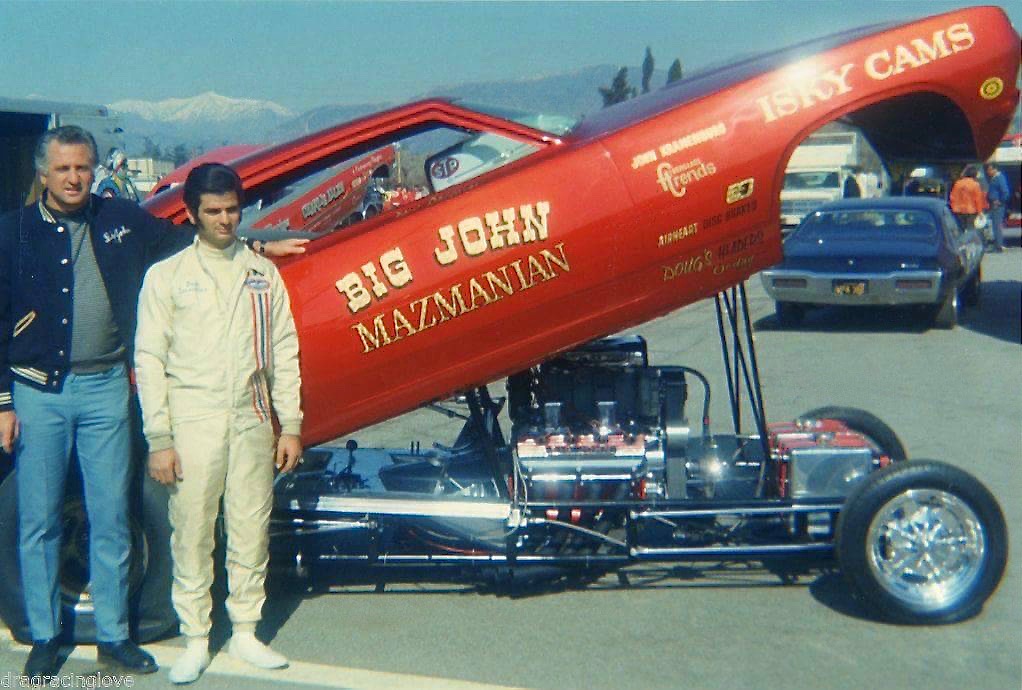
It was truly a “family operation” with the Funny Car, Uncle John and Nephew Richard and a spotless racecar, it was basically a “show car” quality machine that raced hard on the track.

Featuring an Exhibition Engineering chassis (Ron Scrima) with Fiberglas Trends fastback Barracuda body shell, the car was extremely detailed in all aspects. These were the early days of Funny Car racing and learning about aerodynamics, it featured a rear deck spoiler to help stability on the top end.
SET THE SPEED RECORD
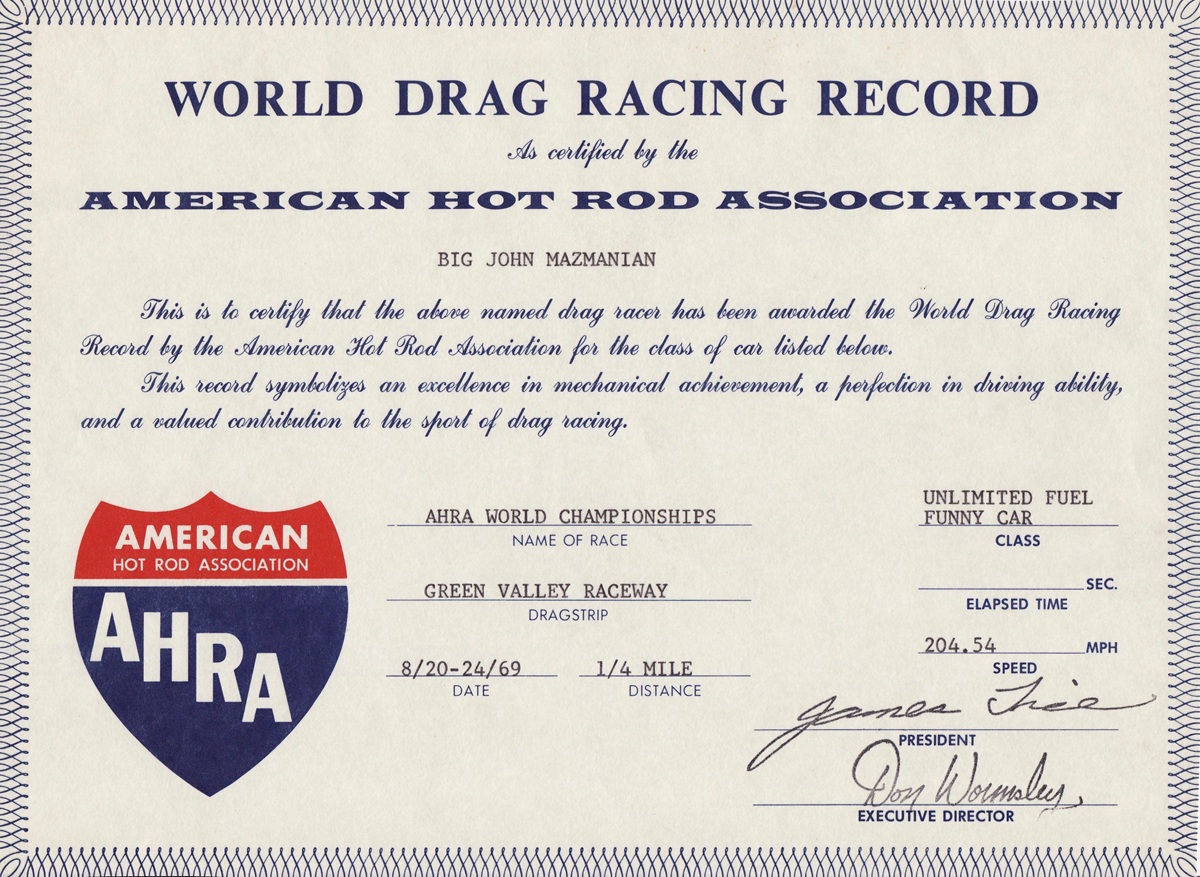
It was August of 1969 when the Big John Barracuda Funny Car set the AHRA (American Hot Rod Association) speed record of 204.54 mph for the class, taking place in Smithfield, TX, at the Green Valley Raceway. Of course records came and went for the Funny Car class; however, setting one was a big deal as drag strip track promoters could use these certifications in their radio and newspaper ads for upcoming events. Match racing was the rage!
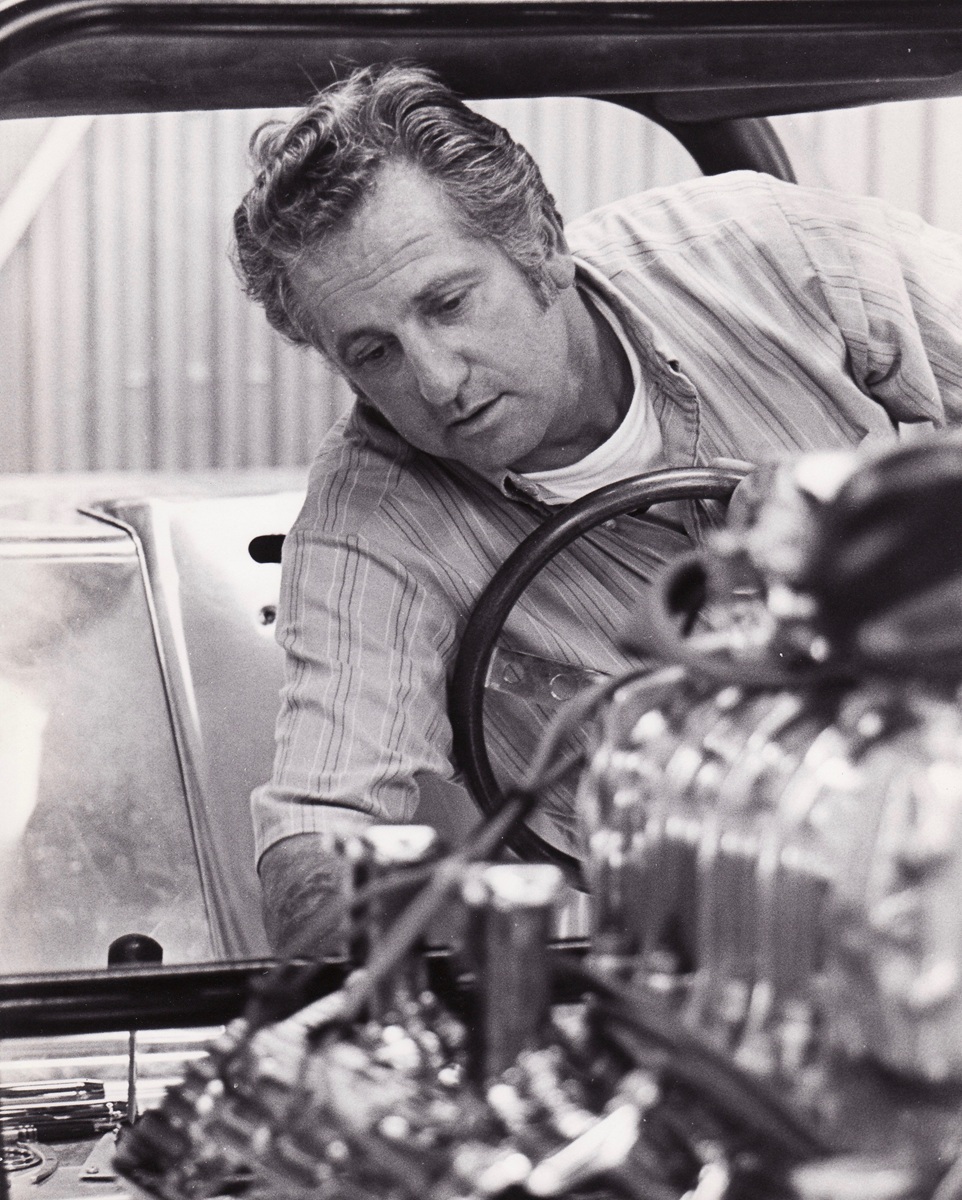
While John wasn’t the engine builder or head mechanic, he was an experienced hot rodder from way back and definitely had a great deal of involvement in all functions of his racecars.
BIG WIN AT THE COUNTY
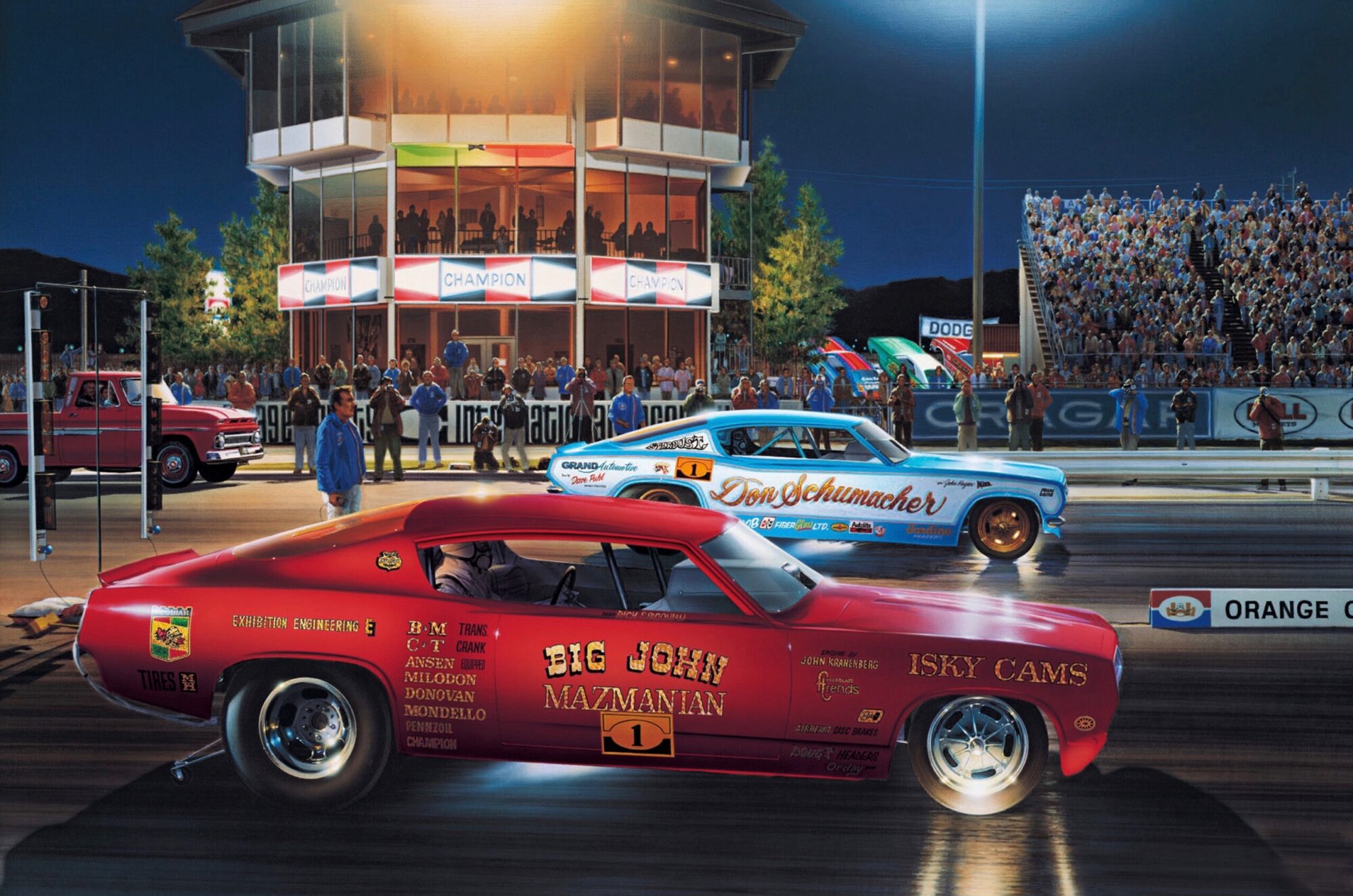
Taking place in November of 1968, the 2nd annual “Manufacturers Meet” saw a big win for the Rich Siroonian-driven car, with an impressive victory at the end of the rain-delayed showdown that ended on the evening of November 23rd. There were some 54 nitro Funny Cars on the ground, 30 entered in the meet five cars in each Chevrolet-Dodge-Ford-Mercury-Pontiac-Plymouth group and 24 as alternates. This was an invitational event. Besides winning the prestigious event, Big John’s Plymouth also set Low ET of the event with a 7.48-second run down the East Irvine 1/4-mile track. It was an all-Plymouth final (against Don Schumacher) and a true career triumph for Mazmanian.
“The Manufacturers Final” is a beautifully detailed museum-quality 18 x 27-inch lithograph done by talented illustrator James Ibusuki, a spectacular rendering from 2003 and currently in high demand by drag racing aficionados who dig fine art.
FINAL ROUND 1969 US NATIONALS
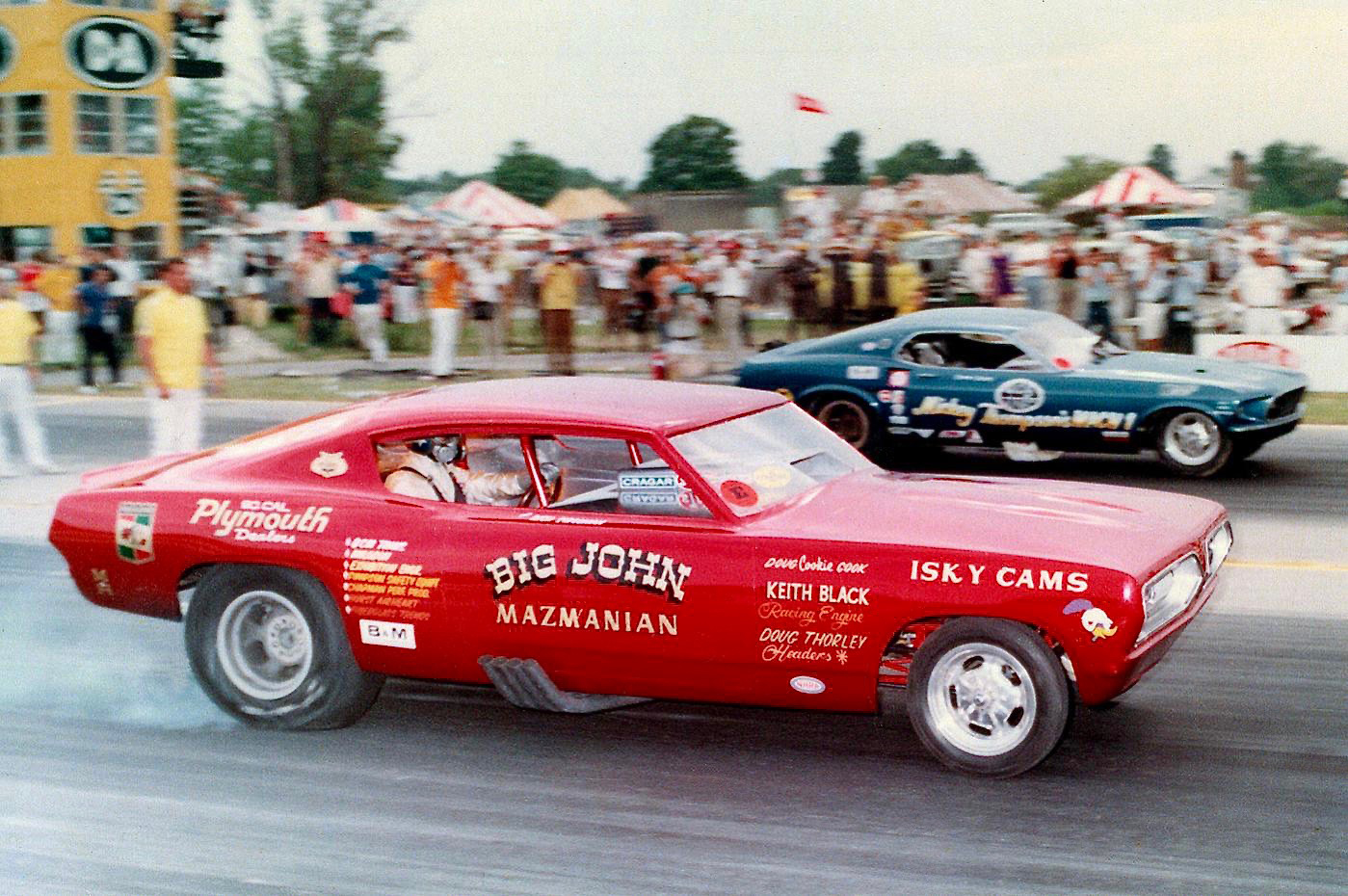
With Keith Black 426 HEMI engine power, the car ran hard at the 1969 NHRA US Nationals making it to the Funny Car final round, only to leave too quickly against the Danny Ongais-driven Mickey Thompson car to automatically lose on a red light start.
1970: ALL-NEW ’CUDA FUNNY CAR
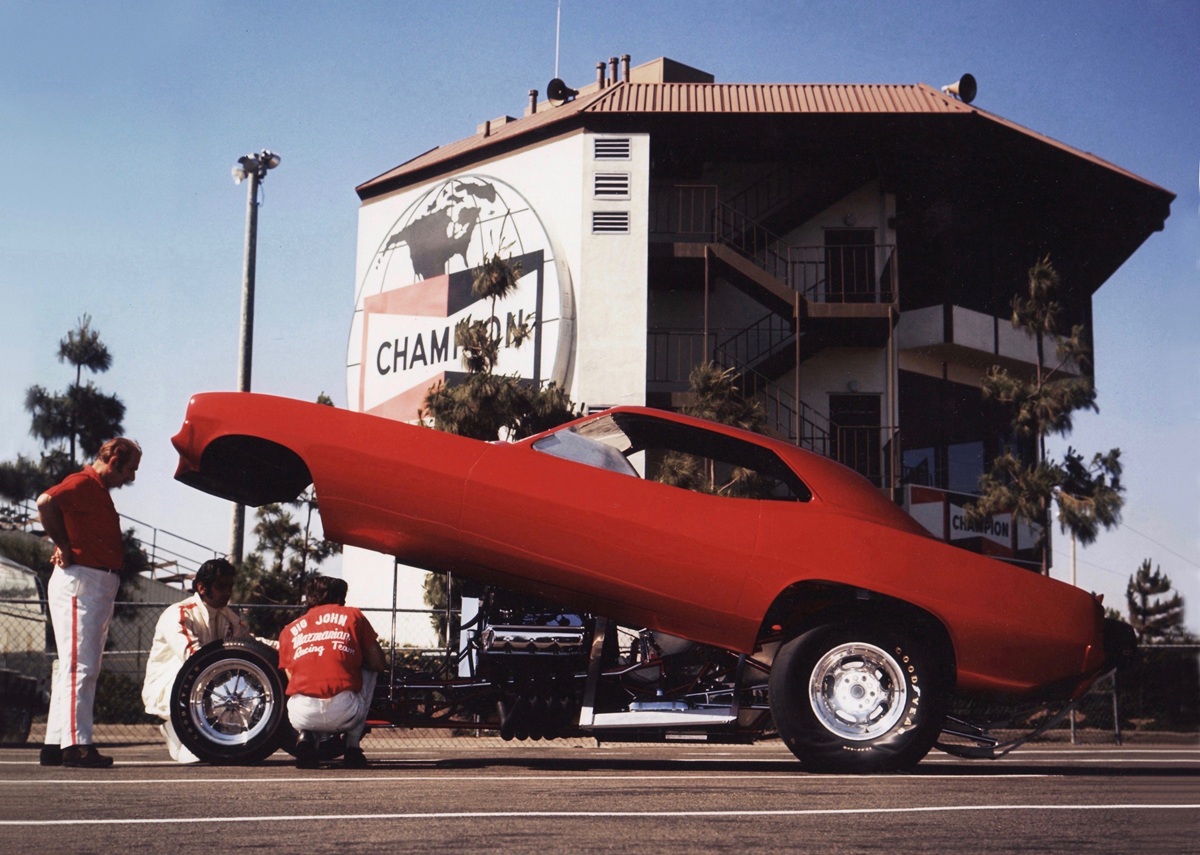
Shown here brand-new in the staging lanes of Orange County International Raceway in East Irvine, CA, the 1970 Big John Funny Car was state-of-the-art in every way and now very much a “house car” of sorts for Keith Black Racing Engines.
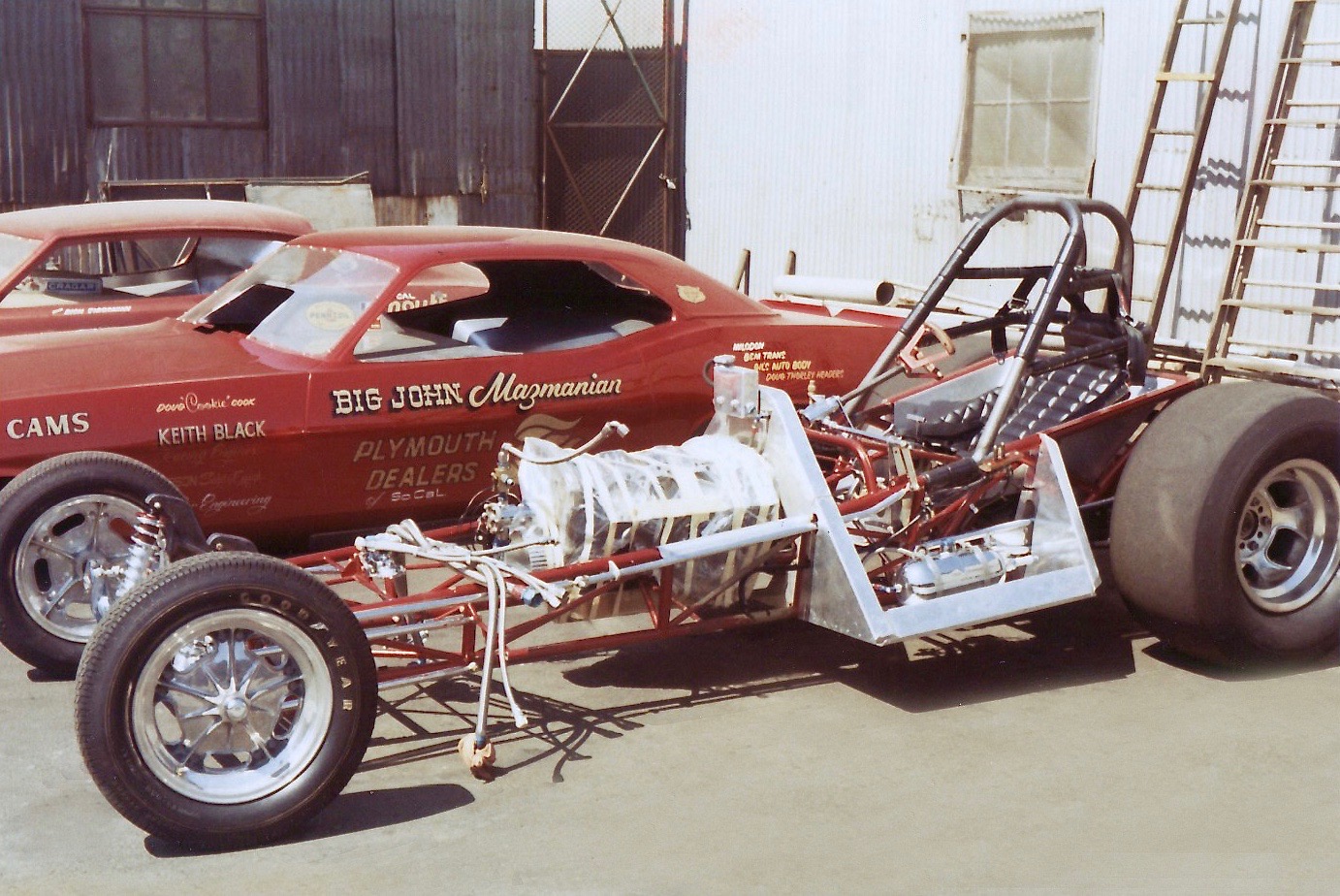
Now supported by the Plymouth Dealers of Southern California, here’s the car as being worked on at the South Gate Keith Black shop, showing the narrow-design Woody Gilmore chassis with butterfly steering, double-looped and tight dragster-style driver roll cage and chassis-mounted aluminum firewall. Under the plastic wrap is a steel HEMI short block.
POPULAR AND GREAT PERFORMING

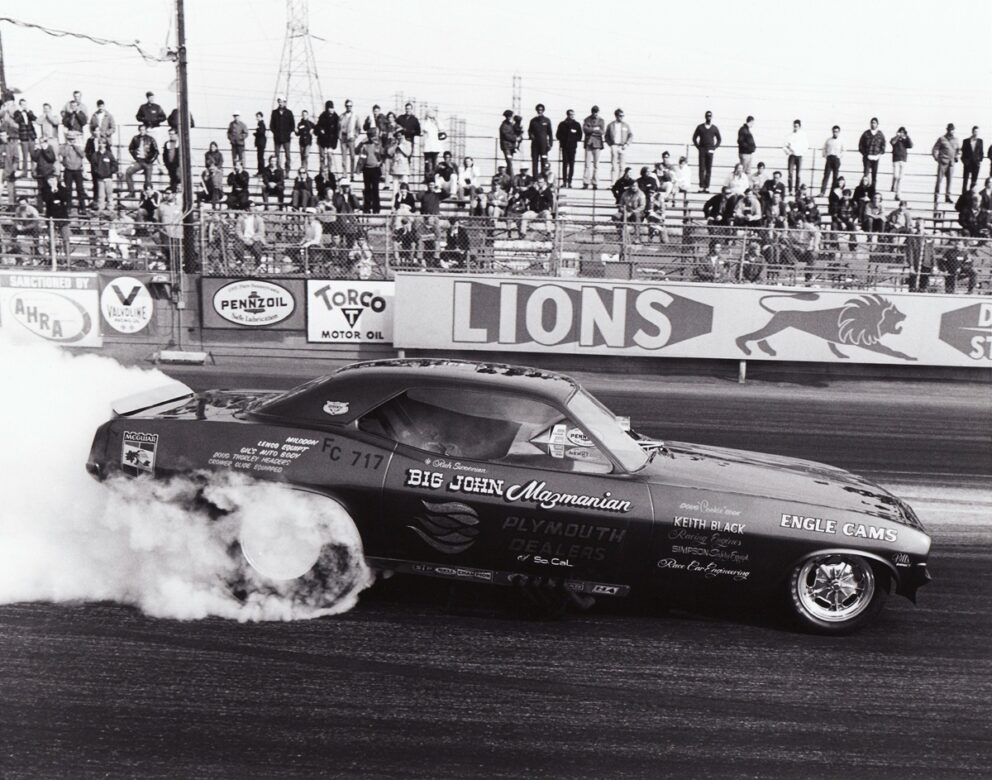
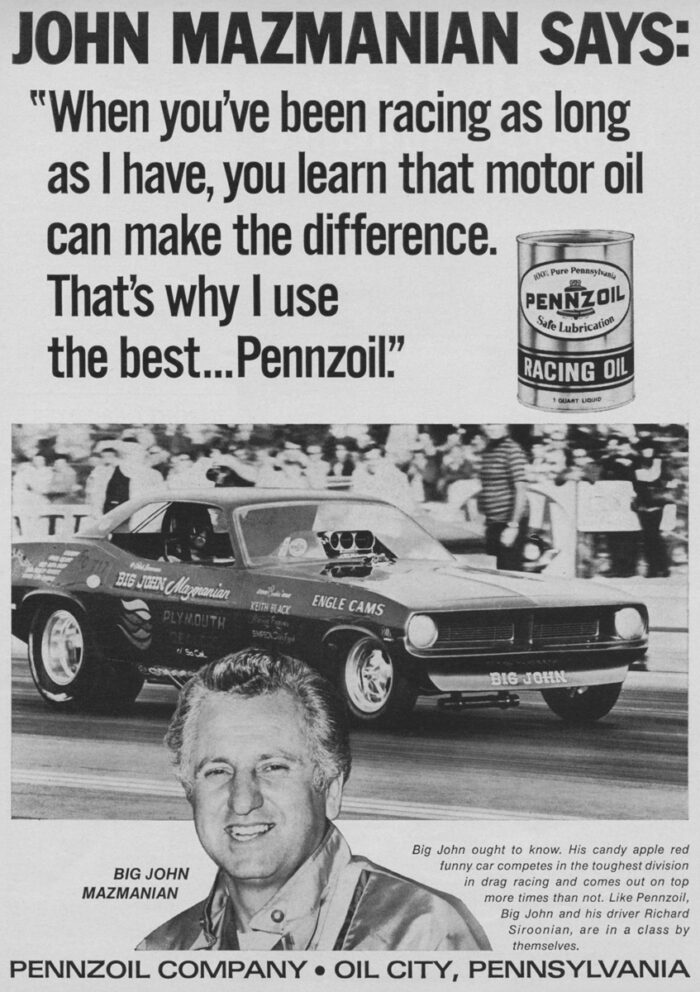
With Keith Black HEMI engine power and a well sorted-out combination, the Rich Siroonian-driven Big John ’Cuda did his uncle proud, running a 221.78 mph speed in the 1970-71 season, becoming the first Funny Car to exceed 220 mph. The car was constructed with a torsion arm front end, Halibrand quick-change rear end (4.30:1 gear ratio) and Crower clutch, Lenco 2-speed transmission. The HEMI engine displaced 470 cubes and was topped off with a 6-71 supercharger and Enderle injector. Overall weight was reported to be 1,720 lbs. During that time frame, the best elapsed time for the car was a 6.76-second run.
Pennzoil Racing Oil was the default lubricant for Keith Black engine customers and the Pennsylvania oil company ran this full-page consumer advertisement promoting the Big John Mazmanian racing operation. “Like Pennzoil, Big John and his driver Richard Siroonian are in a class by themselves.”
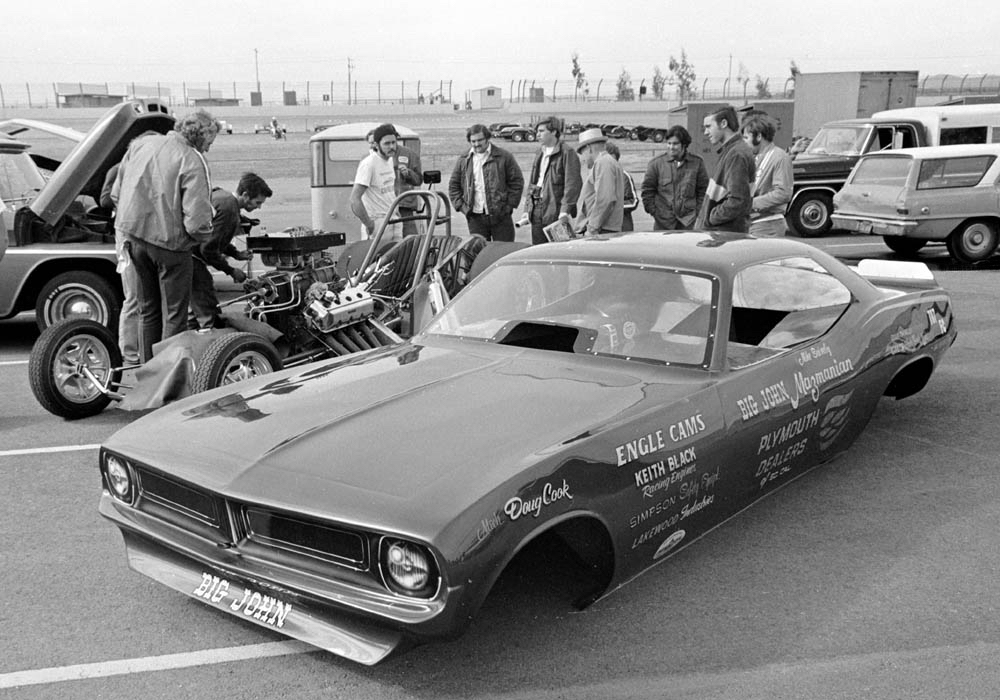
With nephew Rich Siroonian retiring from driving (as a result of getting married and with the insistence from Uncle John!), new driver Mike Snively was brought in, shown here at the “Big O” Ontario Motor Speedway at the NHRA World Finals. Big John watching engine maintenance going on.
HIS LAST FUNNY CAR: “ON-THE-GAS” DANNY ONGAIS
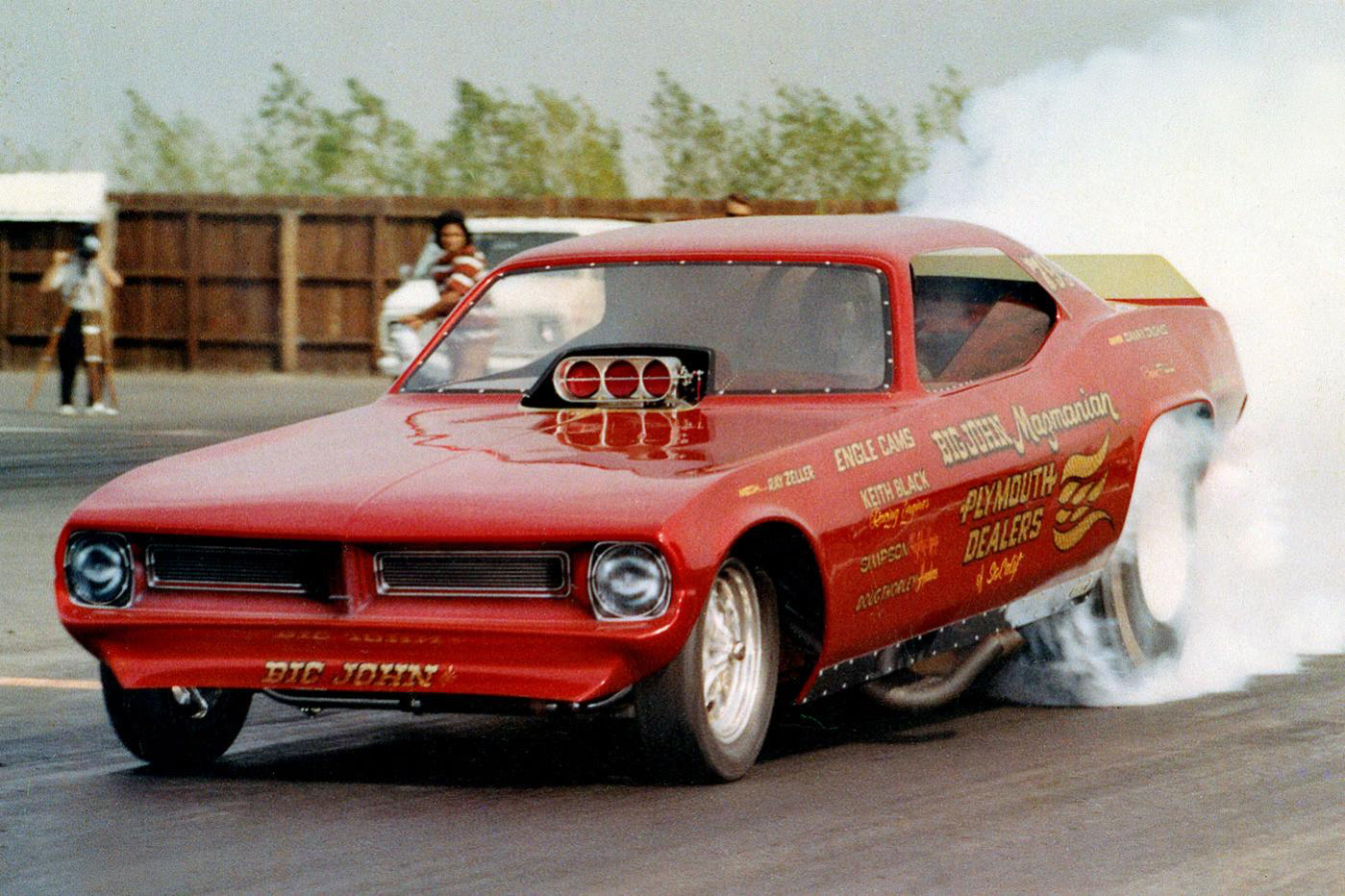
It was 1972 when the final Big John Candy Red ’Cuda was built and campaigned, and his driver was former rival Danny Ongais.
1/25th 1968 BARRACUDA KIT
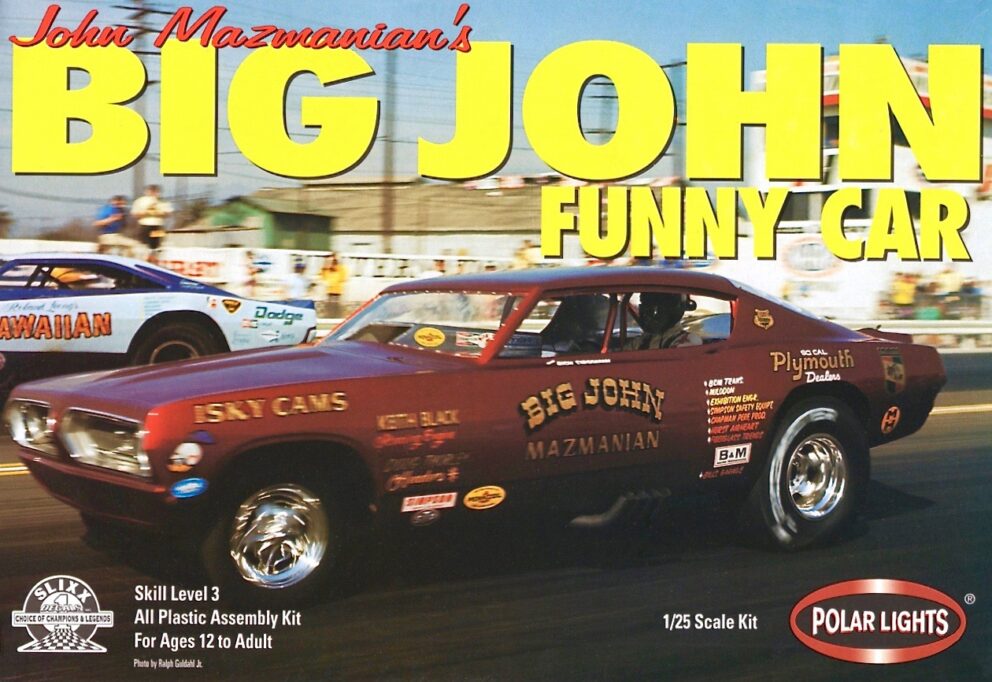
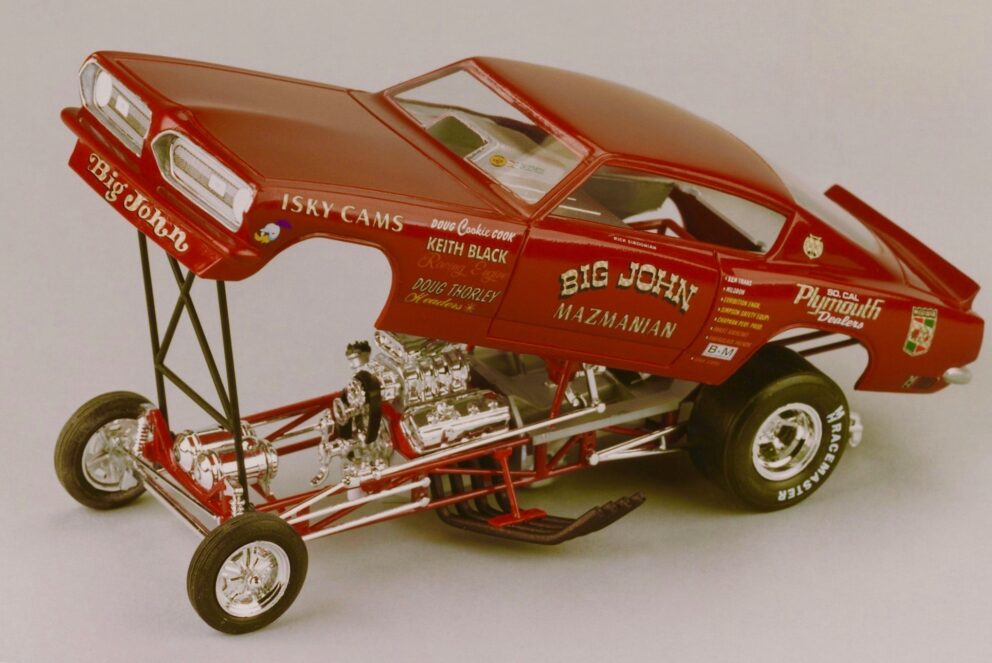

This kit features the car when it ran the Keith Black Gen II 426 HEMI powerplant.
HOT WHEELS FUNNY CAR SUMMER

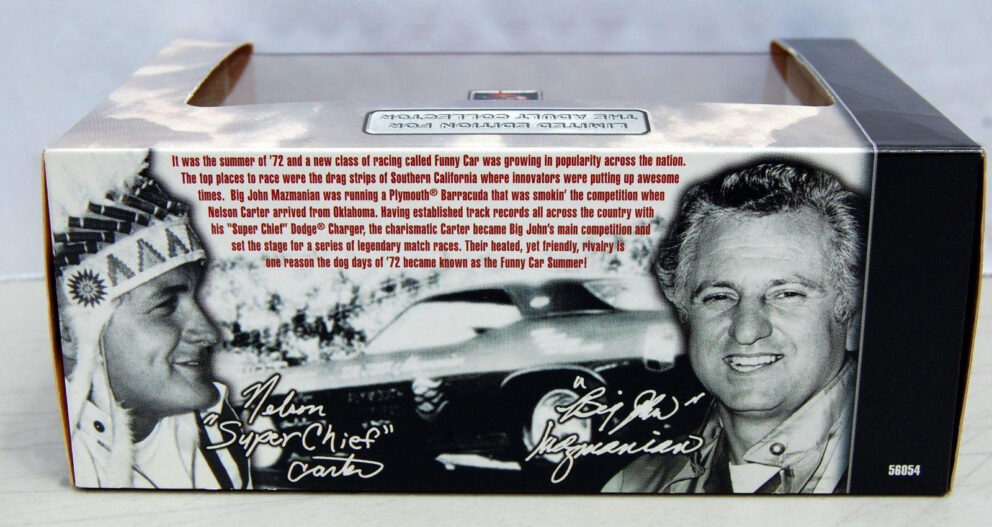
During 2002, the Mattel Hot Wheels company came out with a Funny Car Summer 2-car set of Mopar® drag cars, the Big John “Plymouth Dealers” Barracuda and the Dodge “Super Chief” Charger of Nelson Carter. Featuring flip-top bodies, these 1/64 scale were produced to commemorate the Summer of 1972, an era that was a high water mark for Funny Cars in Southern California and throughout the USA.
1:18 DIECAST ’72 ’CUDA
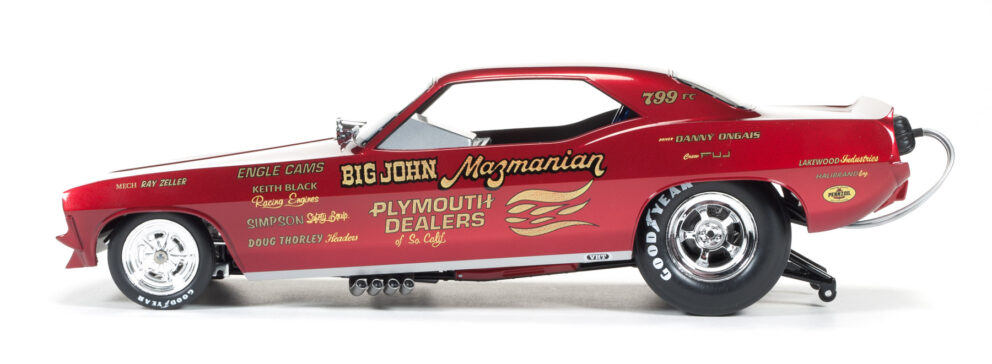
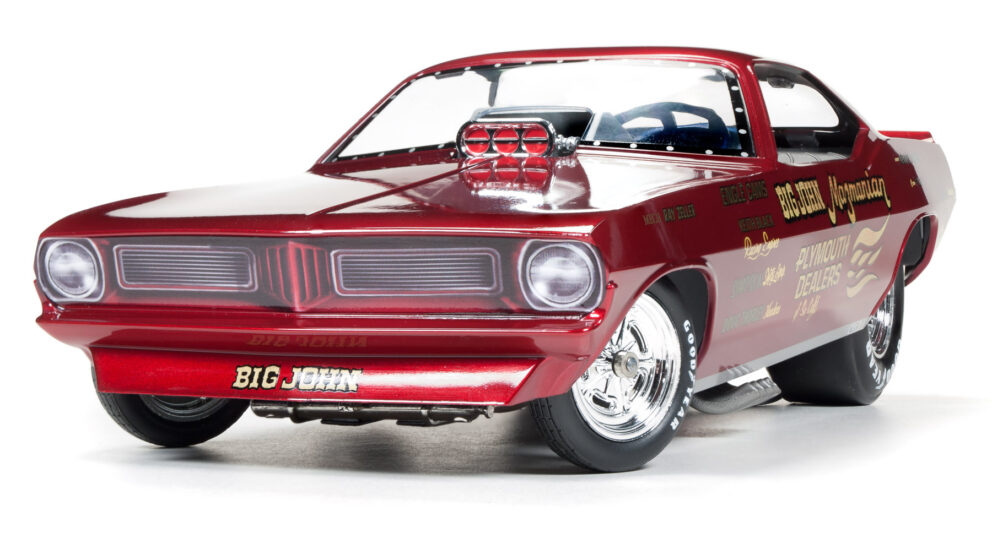
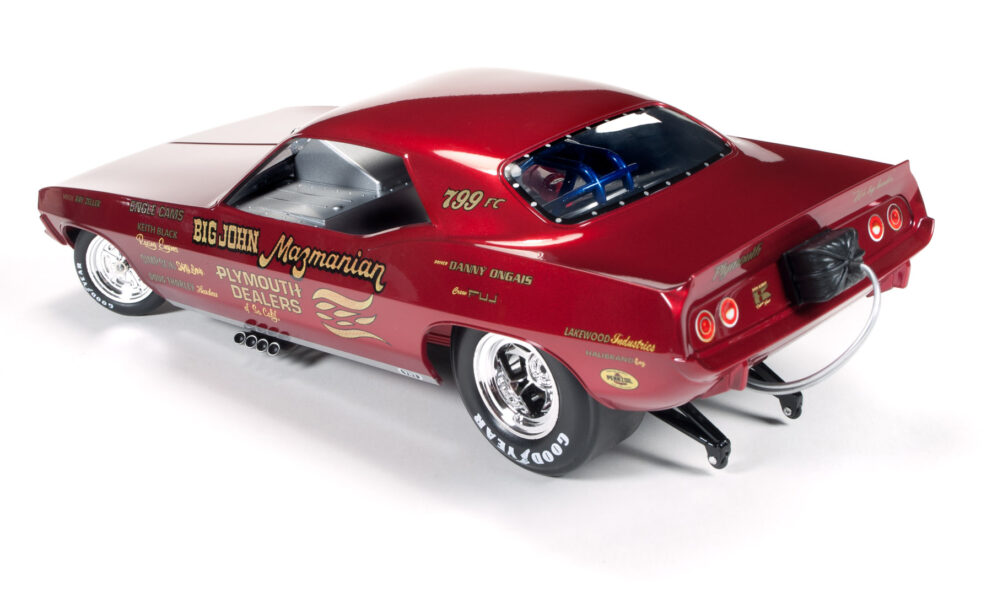
It was 2015 when Autoworld released the 1:18 scale diecast of the 1972 Big John Mazmanian Barracuda Funny Car, with a limited run of 750 units, stock number AW1166. They featured diecast chassis, steerable front wheels, soft rubber tires, metal headers, fully wired and plumbed supercharged HEMI engine, parachute lines and accurate graphics on the Candy Red paint. Body stand included. They went fast and are difficult to find today.
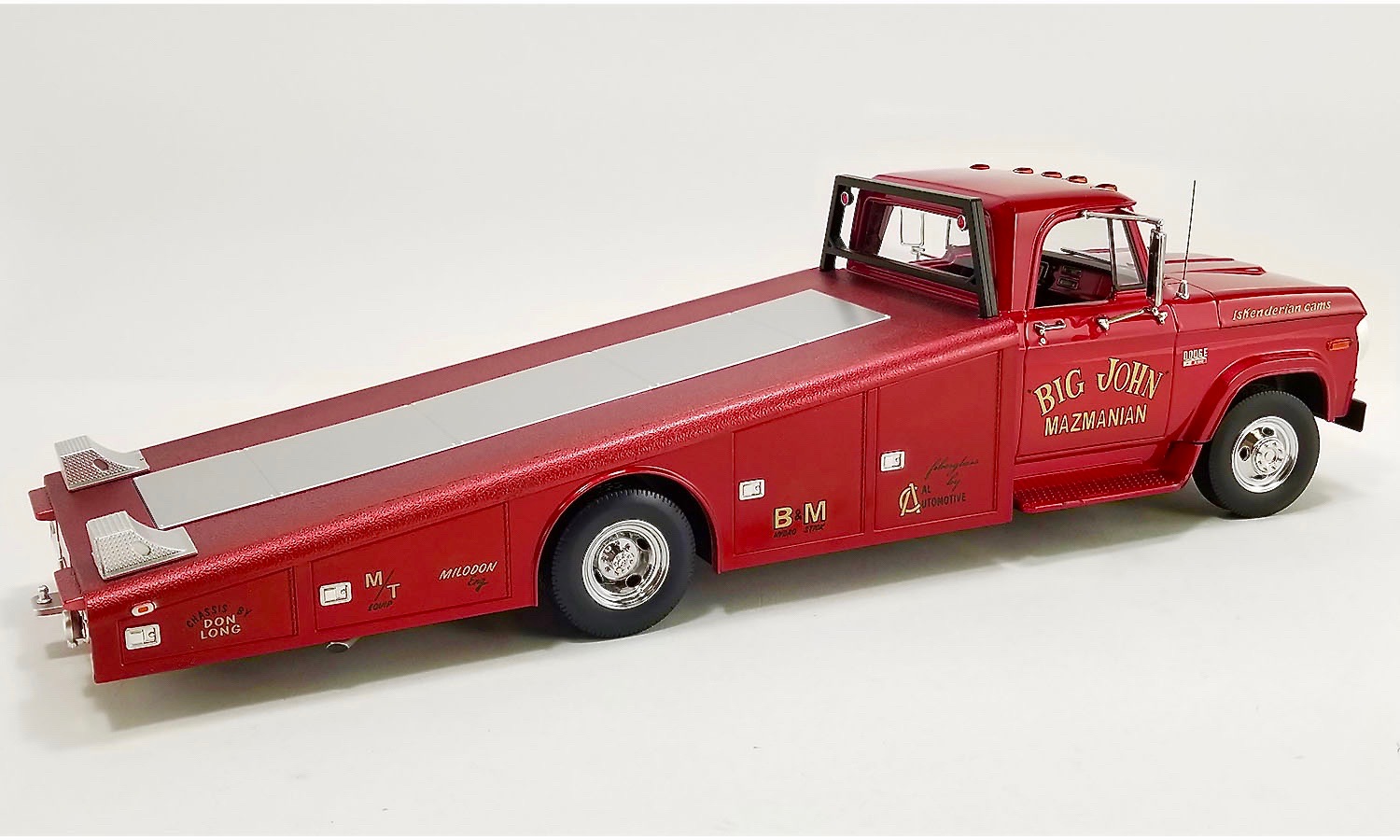
With an estimated run of 400 units (released in 2024), ACME Trading Company released a 1:18 scale red 1970 Dodge D-300 ramp truck done up in Mazmanian graphics. With steerable front wheels and rubber tires, it is an authentic ramp truck complete with adjustable wheel chocks and removeable bed rack.
By 1972, John Mazmanian definitely made his mark in drag racing circles and had grown a huge fan base, but after all the accomplishments, he was spending a lot of time on the racecar program. He told the story of working on the racecar until all hours of the night, into the morning and at times until 4 or 5 am, falling asleep with wrenches in hand! Then, waking up and working all day at the family business. It had become apparent at that time, and without any regret, that it was time to retire the team and sell the operation to Parnelli Jones.
He was inducted into the NHRA Hall of Fame in 1989 and attended selected drag events until his passing, with people often coming up to him with their great memories of his cars that performed so well, entertained the crowds and lit up the scoreboards with impressive times. It was a formidable drag racing career and he’ll long be remembered by drag racing historians.
Here’s one of his shared remarks about his time in the sport of drag racing: “Racing’s been good to me, I’ve been good to racing.”
John Mazmanian 1926-2006
Author: James Maxwell

0 Comments